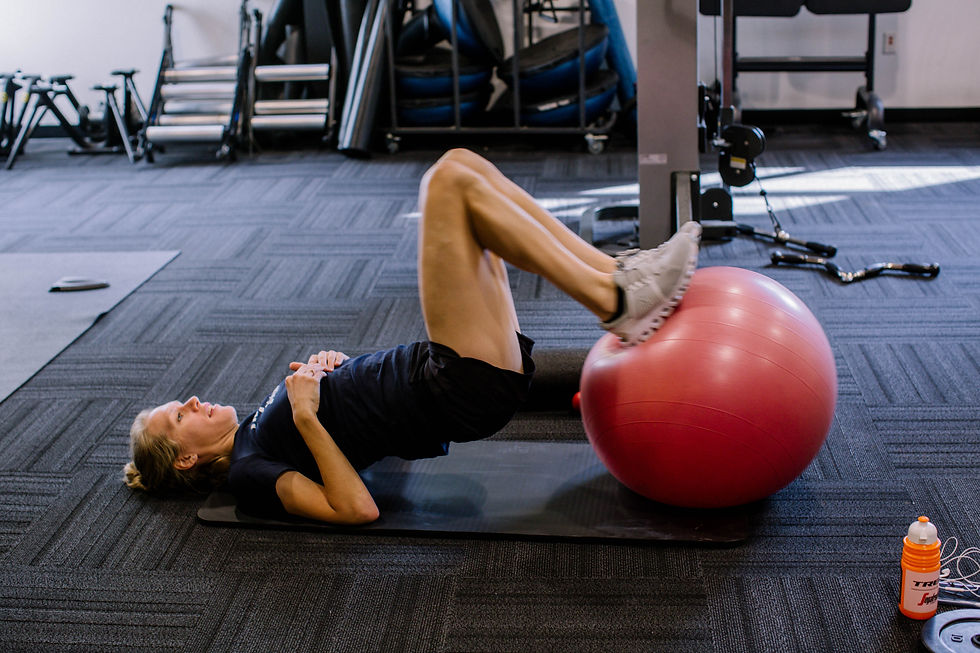Is Your Power Meter Holding You Back?
- will3877
- Feb 25
- 3 min read
When Ulrich Schoberer, a German engineer and founder of SRM, made his final tweaks to the first-ever cycling power meter in the mid-1980s, I doubt he imagined that some cyclists would eventually underperform because of his revolutionary training tool.
Originally, power meters weren’t used as prescriptive tools—they were purely for post-ride analysis. Coaches sent riders out to train by feel (or heart rate), then reviewed the power data afterward for insights. No numbers. No zones. No preset limits.

Fast forward to today, and we have a generation of data-obsessed cyclists, disconnected from their own bodies and convinced that their performance fits neatly into rigid zones.
Are You a Slave to the Numbers?
One major problem with over-reliance on power data is how it affects the psychology of training and racing.
We often hear cyclists say,🗣️ “I could see I was going into the red, so I backed off.” Instead of,🗣️ “I felt like I was going into the red, so I backed off.”
🚨 Big difference: One is an intellectual decision. The other is a deeply felt sensation.
Many cyclists, typically those new to training with power, report finishing events feeling too fresh, regretting their over-cautious pacing strategy. They held back—not because they actually needed to—but based on a calculation of their numbers during the race.
Why Over-Focusing on Power Can Limit Your Progress

If you want to break through a training plateau, win your first race, Gran Fondo or Sportive, stop letting the power meter numbers dictate your upper limits:
🔹 Your physiology isn’t static – If you’re training properly, your fitness will improve faster than you think. Yet, many riders still hold onto outdated FTP / VO2 Max numbers or training zones, fearing the unknown instead of pushing past their perceived limits.
🔹 Breakthrough efforts happen unexpectedly – That all-time best power? It might happen on a day you least expect. But if you’re constantly pacing conservatively, you’ll never know what’s possible.
🔹Busy time crunched cyclists? Stressful demanding job? Kids to go with it? Your training power data can be hugely changeable when you have these "off the bike" demands on your energy and schedule. So, hold onto your percieved limits lightly, they can be obliterated at any time!
🔹 Time in zone ≠ progress for max efforts – In anaerobic and neuromuscular sprint training, absolute power—not "time in zone"—is the key driver of adaptation. If you’re holding back because of a number, you’re leaving gains on the table.
Power Meters: The Good, the Bad, and the Misunderstood
To be clear, power meters have indeed transformed cycling training in ways we never imagined:
✅ Accurate Performance Tracking – Unlike heart rate, which only shows effort, power measures actual output.
✅ Pacing for Time Trials & Breakaways – Very useful to ensure you don't blow up because of a huge adrenaline fuelled initial effort.
✅ Removing External Variables – Unlike speed and distance, power data isn’t affected by wind or terrain
✅ Revolutionising Virtual Cycling – Without power meters, indoor training on Zwift, TrainerRoad, and Wahoo SYSTM wouldn’t exist.
✅ So far, the best way to track training load and peak performance, though metrics like CTL are still only estimations and depend entirely on accurate FTP's.
But here’s the downside: Too many cyclists misunderstand how power zones are created and what physiological thresholds really represent.
As a result, they treat numbers as hard limits rather than useful guidelines, leading to:
🚫 Holding back in races and training
🚫 Misjudging effort levels in real-world conditions
🚫 Slower long-term progress due to under-training
How to Use Power Meters Without Letting Them Control You

📌 Use them as a guide, not gospel – In races and MAX training efforts, be brave! Push beyond your perceived limits when your body says you can.
📌 Trust your sensations – Power numbers tell part of the story, but your body knows more than your screen does.
By combining data with instinct, you’ll train smarter, race harder, and break past self-imposed limits—the kind Ulrich Schoberer never intended when he changed cycling forever.
Final Thought
Power meters are a tool, not a rulebook. Use them wisely, but don’t let them define what’s possible.






Comments